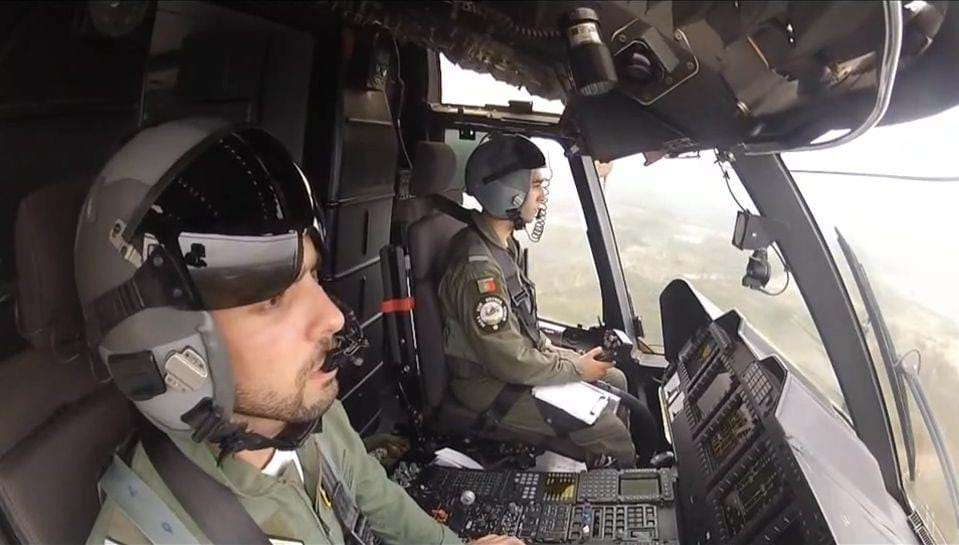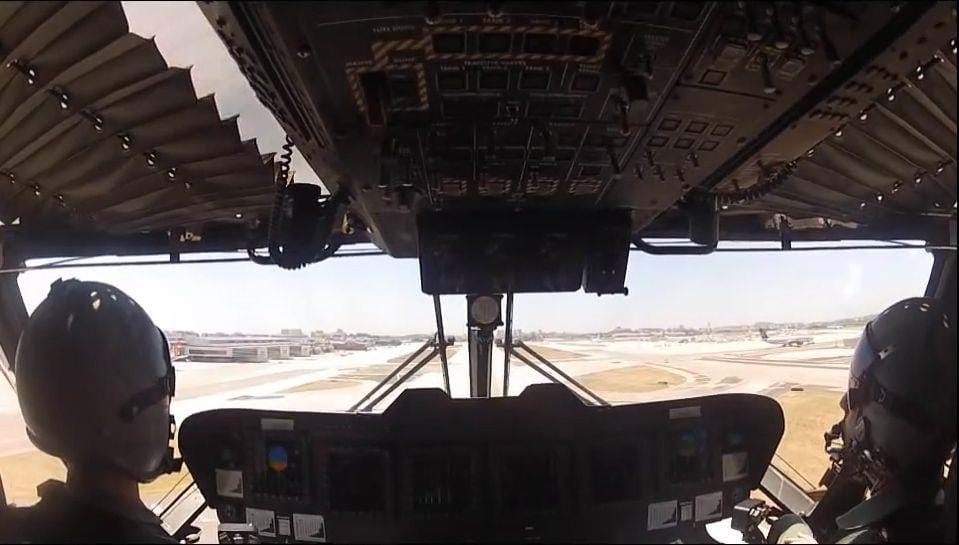Ricardo is our most recent guest writers and he will grace us with real stories about real SAR missions he performed while in this Squadron. “That others may live”.
The hardest part
“What’s the hardest part?”. I heard this over and over again. It was always the same whenever someone found out I was working in Search and Rescue. “All missions are hard. All of them are different”. Also always the same answer.
This is true. But it's also a lie.
It is true because all missions, real or training, were, in fact, different. The simplest ship could become the hardest and meanest thing in the Northern Hemisphere. It wouldn’t be the first time. Trust me: I know.
It was a lie because we always knew – from the start – which ones were the hardest operations: the ones involving fishing vessels.
For us (well, at least for me), the fishing vessel was something spawn from Hell. A cruel and restless little nutshell in the middle of the ocean. Small (often smaller than the helicopter itself), filled with obstacles and very prone to the influence of a low speed helicopter downwash. Add 20 feet waves and 40 knot winds to the equation and imagine you’ll have to hang your friend out of the helicopter and into a very tight spot. Even more fun if we need to do all this during the night.
The Scorpius
One day it had to be my first time performing an operation in one of these ships from hell. July 2nd, 2013 was that day.
Scorpius. A heck of a name for a fishing vessel. When that name was passed on to me on the phone, I never assumed it was one of those. That’s a great name for a cargo ship. Or perhaps a tanker. A yacht, maybe? Yeah, make it a yacht. Or maybe the Holy Grail: the Playboy Yacht; a piece of mythological steel that makes part of the imagination of everyone that faces a demanding alert operation.
The weather was weird. It was fine at Montijo but getting worse North of Lisbon. What the… It’s July! The ceiling was at around 1,000 feet and getting lower when we decided to keep ourselves above it. We got into the clouds and crossed the coast line. The last indication we have of it is the green tainted image from our search radar that refreshes every few seconds.
The clouds around us are getting lighter; a more intense and brighter white. We are almost exiting the layer. I close my eyes. The light intensity is such that even the helmet visor doesn’t help. All of the sudden, a clear, wonderful blue sky. We level the EH-101. I take a mental picture and give myself 5 seconds to enjoy the clouds tearing the sky around us. “The sun always shines high above”. That is so true.
We are near the location of our objective, somewhere offshore the Figueira da Foz. About 40 miles out of the provided coordinates, we try a first contact with the Scorpius through the channel 16 (the maritime emergency channel).
Today it wouldn’t just be my first time in this types of vessels. It would also be the first for the Systems Operator – the person handling the hoist. An amazing photographer as well. I followed him closely while he was doing his OPS qualification and was even the Pilot in Command in a few of his evaluation flights. I knew he was a great professional. And that give you the so needed confidence in these types of operations.
If I screw something up, the Rescue Swimmer – another great friend of mine, nearly 6ft 7in and twice my arm span – would certainly kick my ass around the Merlin.
We initiate the descent. The contact with the vessel was established. We slide down to 200ft and cleared the clouds at around 800ft. The coordination with the Scorpius is clear: we will need them to navigate with the wind at around 30 degrees on the port side. This will allow us to position ourselves in the best possible position for recover.
I use the internal comm system: “Hoist recover checks” and position the helicopter in a hover next to the ship on the port side, with the side door open and we start to exchange opinions between ourselves. Regardless of the rank (Lieutenant, Staff Sergeant or First Sergeant) and job (Pilot, Co-Pilot, Rescue Swimmer, Systems Operator and Nurse), everyone’s opinions are voiced and heard. There’s no room for egos. For selfishness. For individualism. We work as a team and we are one. Lives depend on that.
We decided to perform the operation lower than usual. We’ll be doing it at 50ft because of the size of the shop. “A nutshell” echoes through my mind.
The EH-101 is a rather big helicopter so the distance between the pilot’s seat and the hoist is quite big – around 10-13 feet. This means that when the hoist is perfectly vertical to the Rescue Swimmer entry point, the pilot is several feet ahead. When dealing with small vessels, we risk losing any visual reference. Without visual references, there’s no hover. Without hover, there’s no rescue. And the Scorpius is one tiny ship.
We also decided to use a hi-line. This means we would use a guide cable on the vessel that will help with the descent of the Rescue Swimmer into a very tight spot.
The hi-line was ready. Fifty feet in the radio altimeter. Checks performed. We’ll make a trial run first in order for me and the Systems Operator to take any necessary references.
“Ten right, two ahead”, the Systems Operator begins.
“Eight right”.
“Six right”.
At the front, I look through the right window. The Scorpius is starting to hide itself behind the Merlin’s fuselage. I see a small portion of the hull smashing against the waves through the small window at my feet. I keep the window open so that I can feel the breeze I love so much.
“Two right”.
“I’ve lost pretty much all visual references down here”, I reply.
“One right”.
“Vertical. Keep it steady.”
“I have no visuals!”, I urgently reply.
“Two left. The vessel’s on the left. We’re losing the objective”, the Systems Operator tells me.
“Four, no, six left”.
“Ten left. Lost the objective”.
The almighty “F” word crosses my mind. “Lost the objective”. Those are words I’ve never thought I’d hear when flying the right seat.
I use the internal comm again: “I’ll circle around and we’ll try again. This time at forty feet”.
I descent to the determined altitude. How 10 feet make a difference. Lower would be impossible. The Scorpius had a set of antennas that would simply not stop. A bit lower and we’d get to greet them in person.
When I hear the words “Vertical. Keep it steady.” again, I can see part of the hull of the Scorpius at my feet. At which bigger wave I lose it for a few seconds. I instinctively pull the cyclic each time that happens. Two more seconds is enough to get the hi-line in the vessel.
“Contact! Twenty left.”
The hi-line is attached to the ship! I place myself on the left with the Scorpius well within my sight. From now on all the operation will be performed with the precious hi-line, which will allow us a more progressive placement and will reduce the amount of time that I will need to keep the Merlin to the vertical of the ship.
We go in again, now with the Rescue Swimmer. He gets attached to the hoist, holding the hi-line that will guide him down the small ship on one of his hand.
We placed him in a small space on the port side, just aft the bridge of the Scorpius.
The Rescue Swimmer is in and now it’s time to take the litter down. In a little over 3, 4 or maybe 5 minutes we’ll have our precious cargo aboard.
“You have the helicopter” I say my co-pilot. A perfect exit and we turn to the right.
Returning home
I clear the sweat on my forehead and snap my neck. It sure needed because of all the tension.
I head South, towards Lisbon, to the Lisbon Airport, still with low ceilings so we need to fly lower – right on! – always VFR.
We landed on runway 17 and rolled over to the military part of the Airport, known as Figo Maduro.
“That was a hard one”, I tell the crew, “tiny fishing vessel, heh guys?”
“You bet!” I hear someone at the back saying.
Little did I know I would swallow my words just three weeks later. I would go out again to meet another fishing vessel. A good 3-4 feet smaller than the Scorpius. 3-4 feet! 3 to 4 goddam feet.
Lesson of the day: size does matter.
A lot!






